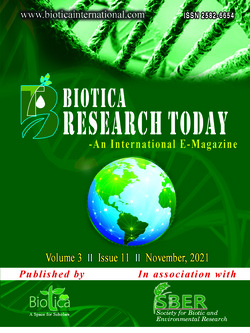
Bioleaching of Heavy Metals and Its Mechanism
Dharani J.
Dept. of Environmental Sciences, Tamil Nadu Agricultural University, Tamil Nadu (641 003), India
E. Parameswari*
Dept. of Environmental Sciences, Tamil Nadu Agricultural University, Tamil Nadu (641 003), India
M. Maheswari
Dept. of Environmental Sciences, Tamil Nadu Agricultural University, Tamil Nadu (641 003), India
DOI: NIL
Keywords: Bioleaching, Complexolysis, Fungus, Yellow Boy pollution
Abstract
Sewage sludge, waste water treatment plant sludge and many other wastes contains considerable amounts of heavy metals. It is a prime work to remove all the heavy metals before letting it to the natural resources. The main aim of bioleaching is the removal heavy metals which may be toxic and harms the environment. Bioleaching is a promising (could be progressive) technique that utilizes earth sound advancements that are helpful for the digging business and furthermore for ecological detoxification. In bioleaching, the microorganisms produce a chemical compound which includes natural acids, polymers and proteins. This process also has some potential effects on metal retrieval as well as detoxification of waste materials.
Downloads
not found
Reference
Bock, M., Bosecker, K., Winterberg, R., 2006. Bioleaching of Soils Contaminated with Heavy Metals. Journal of Environmental Science 133, 639-644.
Brandl, H., 2001. Microbial Leaching of Metals. In: Rehm H.J. (ed.), Biotechnology 10, 191-224.
Sebastian, S.P., Udayasoorian, C., Jayabalakrishnan, R.M., Paramesewari, E., 2009. Improving soil microbial biomass and enzyme activities by amendments under poor quality irrigation water. World Applied Sciences Journal 7(7), 885-890.
